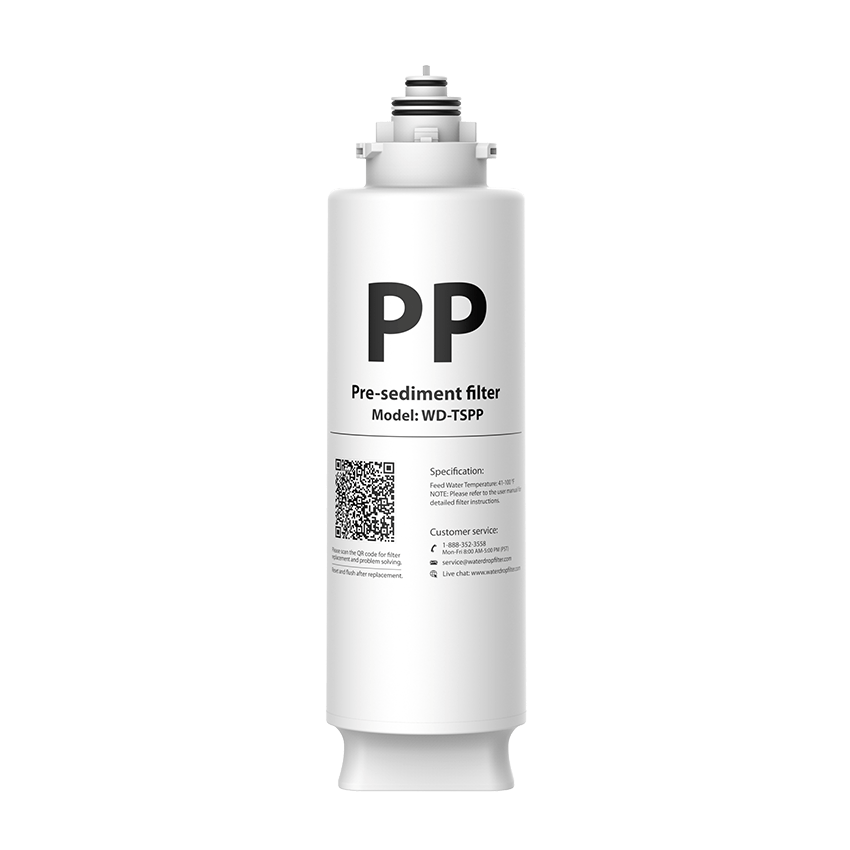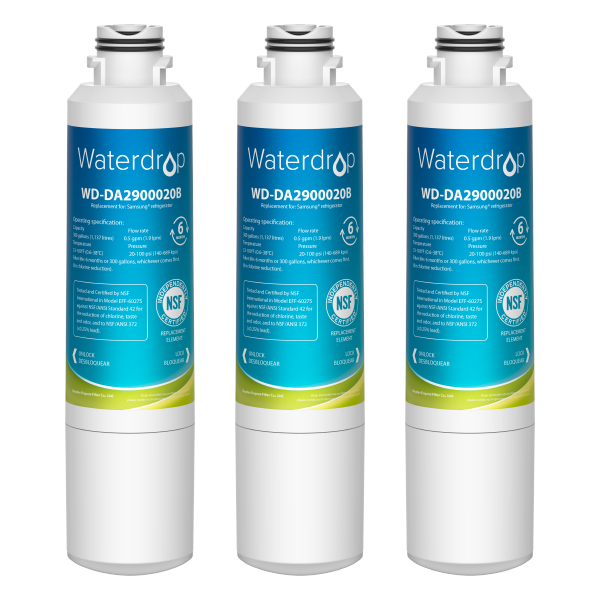How to Filter Tank Water for Drinking?
by Dr. Jonathan Doyle - Updated January 20, 2025
Water is essential for life, and ensuring that the water you drink is safe and clean is crucial. For many Australians, especially those in rural areas or those using rainwater tanks, the water they rely on for drinking comes from a tank. While rainwater tanks provide a sustainable and eco-friendly water source, it’s important to filter this water properly to ensure it’s safe for consumption.
In this guide, we’ll take you through the steps of how to filter tank water for drinking in Australia, offering tips, best practices, and recommendations for reliable filtration systems. Whether you’re new to tank water or looking to upgrade your filtration setup, this guide will help you make informed decisions about keeping your water pure and safe.
Why Do You Need to Filter Tank Water for Drinking?
Tank water, particularly rainwater, may seem like a clean and natural resource, but it can contain impurities that may be harmful if consumed without treatment. Rainwater can pick up contaminants from the atmosphere, the roof, and gutters, such as:
- Debris and dirt from the roof and gutters
- Bacteria and viruses from animals, bird droppings, and insects
- Chemicals and pesticides from the environment
- Algae from stagnant water

While the water in your tank may look clear, it can still contain harmful microorganisms and pollutants. Proper filtration removes these potential health hazards, making your water safe for drinking.
Types of Water Filtration Systems for Tank Water
When it comes to filtering tank water for drinking, there are several types of filtration systems available, each with its unique benefits. The most common methods include activated carbon filtration, UV (Ultraviolet) filtration, and reverse osmosis. Let’s break these down further to help you understand which system will best meet your needs.
Activated Carbon Filtration
Activated carbon filters are popular choice for tank water filtration. They work by adsorbing impurities like chlorine, pesticides, volatile organic compounds (VOCs) , and some heavy metals, improving both the taste and smell of the water. Carbon filters are particularly effective at removing contaminants that can affect the quality of water, such as:
- Chlorine
- Pesticides
- Industrial chemicals
- Foul odours

Activated carbon is often used as a filtration method to enhance the water’s safety and taste.
UV (Ultraviolet) Filtration
UV water purifiers are becoming increasingly popular for disinfecting tank water. They use ultraviolet light to kill bacteria, viruses, and other microorganisms that can cause waterborne diseases. UV filtration doesn’t require chemicals and is a chemical-free, environmentally friendly way to treat water.
How it works:
- UV light disrupts the DNA of bacteria and viruses, rendering them harmless.
- The water is passed through a UV chamber where it’s exposed to ultraviolet light.
- UV filtration is effective at neutralising pathogens, but it doesn’t remove particles or chemicals from the water.
It’s important to note that UV filtration works best when the water is relatively clear. If your tank water has a lot of debris or suspended solids, it may affect the effectiveness of the UV light.

Reverse Osmosis (RO)
Reverse osmosis is a highly effective filtration method that removes a broad range of contaminants from water, including bacteria, viruses, heavy metals, salts, and other dissolved substances. This system uses a semi-permeable membrane to filter out impurities from water.
- RO filters are ideal for people who want the highest level of purification for their drinking water.
- However, reverse osmosis systems waste some water in the filtration process and can be more expensive to maintain.
- The water produced by an RO system is usually very pure, but it may require remineralisation to replace lost minerals, which can improve its taste.
Steps to Filter Tank Water for Drinking
Now that we’ve covered the main types of filtration systems, let’s go through the steps you should take to ensure your tank water is safe to drink.
Regular Tank Maintenance
The first step in ensuring your tank water remains safe for consumption is proper tank maintenance. Keeping your rainwater tank clean will reduce the amount of debris and contaminants entering the system. Here’s how you can maintain your tank:
- Clean your gutters regularly : Gutters can collect leaves, bird droppings, and other debris, which can end up in your tank. Clean them at least twice a year, or more frequently if you have a lot of trees around.
- Inspect the tank for cracks or leaks : Any cracks or leaks can let in dirt or contaminants. Seal any leaks as soon as possible.
- Use a first-flush diverter : This device diverts the first few litres of rainwater that falls, which is often the dirtiest. It prevents contaminants from entering your tank.

Install a Pre-Filter System
Installing a pre-filter system is the next step. A pre-filter can include mesh filters or sediment filters that catch larger particles like dirt, leaves, and insects. These filters will help prevent clogging in your primary filtration system and extend its life.
Add an Activated Carbon Filter
After the water passes through a pre-filter system, consider adding an activated carbon filter. This will improve the taste and odour of the water by removing chlorine, chemicals, and other impurities. If you’re using a multi-stage filtration system, activated carbon should be installed as the second stage.
Install a UV Filter for Disinfection
Next, install a UV filter to kill any bacteria, viruses, or pathogens that may still be present in the water. UV filtration is especially useful for making sure your drinking water is free from harmful microorganisms.
Consider Reverse Osmosis for Maximum Purity
For those looking for the highest level of purification, reverse osmosis (RO) is the ultimate option. RO systems remove a broad range of contaminants, ensuring that your drinking water is clean, safe, and pure. However, because this system is more expensive and requires ongoing maintenance, it’s best suited for households that need top-quality water and are willing to invest in the technology.

Additional Tips for Ensuring Clean Tank Water
While filtering your tank water is essential, there are a few more tips that will help you ensure your drinking water remains safe:
Test Your Water Regularly
Testing your tank water regularly can give you peace of mind, especially if you notice any changes in the taste, smell, or appearance of the water. Water tests can detect contaminants such as:
- Bacteria (E. coli, coliform)
- Heavy metals (lead, copper)
- Pesticides
- pH levels
You can buy home water testing kits or hire a professional to carry out comprehensive water testing.
Use Water Storage Tanks with Lids
Keeping your tank sealed is essential to prevent contamination from insects, animals, and debris. Tanks with tightly fitting lids help protect the water from external contaminants while ensuring that it stays clean.

Conclusion
Filtering tank water for drinking in Australia is a crucial step in ensuring you and your family have access to clean, safe water. By investing in the right filtration system and maintaining your rainwater tank, you can significantly reduce the risk of consuming harmful contaminants. Whether you opt for activated carbon, UV, or reverse osmosis filtration, each step plays an important role in purifying your tank water.
By following these tips, you can enjoy peace of mind knowing that the water you drink is not only sustainable but safe for consumption. Stay proactive with tank maintenance, install a reliable filtration system, and always test your water regularly to ensure it meets safe drinking standards.
Contaminants Detected in Fruitland Water Special Service District
30
Contaminants
EXCEED EWG HEALTH GUIDELINES
EXCEED EWG HEALTH GUIDELINES
30 Total Contaminants in Your Water
Water Provider
Fruitland Water Special Service DistrictPopulation Affected
120,000Water Source
Ground waterExceeds Guidelines
Others Detected









